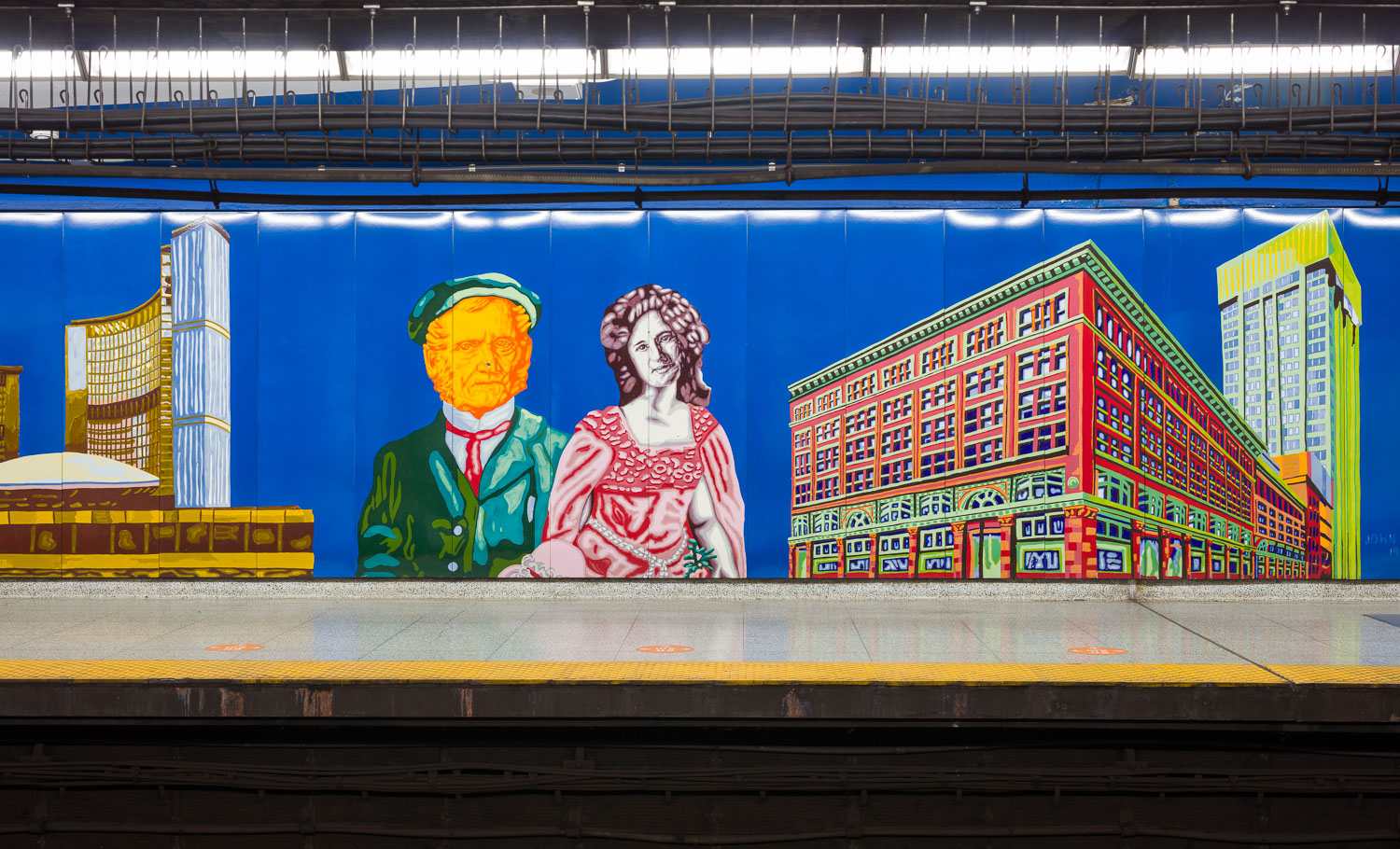Queen Station contains a painted mural by self-taught Canadian John Boyle at the platform level titled Our Nell. Featuring depictions of Nellie McClung, William Lyon Mackenzie, as well as the former Simpson’s and Eaton’s department stores, Boyle’s work was known for his use of subjects drawn from his own specific life experience and from Canadian history. He was a part of the London Regional art movement.
Nellie McClung, women’s rights activist and one of the Valiant Five who successfully petitioned to have women recognized as “persons” by the Dominion government in 1927. The male figure is that of William Lyon Mackenzie, member of the Upper Canada Legislative Assembly 1827-1834; Toronto’s first lord mayor 1834; founder/publisher of the reform newspaper, The Colonial Advocate and leader, in Upper Canada of the Patriots’ Rebellion of 1837.

